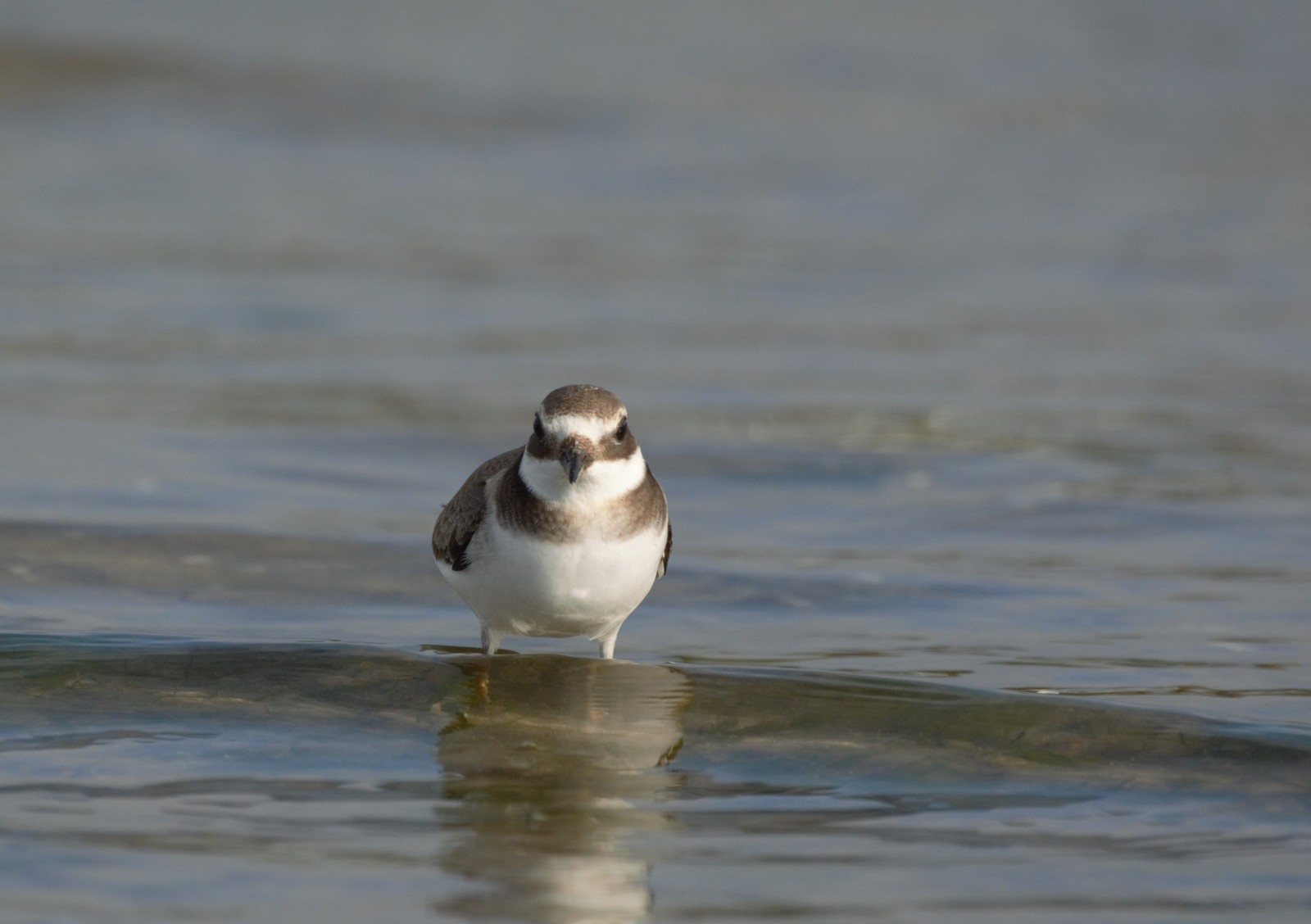Beschreibung
The mouth of the Scolmatore d'Arno is together with the mouth of the Serchio river, one of the main hotspots for observing sea birds in Tuscany and is one of the most important areas for gulls and terns not only in Tuscany, but also throughout the national territory. In Spring and Summer, the mouth of the river features hundreds of terns: Zwergseeschwalbe, Flußseeschwalbe, Brandseeschwalbe, with smaller numbers: Weißflügel-Seeschwalbe, Trauerseeschwalbe, , Raubseeschwalbe. Very rare species for Italy have been sighted such as: Küstenseeschwalbe, Rüppellseeschwalbe, Rosenseeschwalbe. Among the seagulls as well as the Mittelmeermöwe and the Lachmöwe there are also regularly Dünnschnabelmöwe, Schwarzkopfmöwe (sometimes even with large numbers, even 500 individuals), Zwergmöwe. Rare sightings include Schwalbenmöwe, Eismöwe, Heringsmöwe, Fischmöwe. During spring and autumn migration, beaches can attract different species of waders such as: Knutt, Alpenstrandläufer, Sandregenpfeifer, Austernfischer, Rotschenkel, Kiebitzregenpfeifer, Flußuferläufer. Here too there is no lack of rarer observations such as the Terekwasserläufer. Naturally the presence of the species is strongly correlated to the water level. In winter, the sea is the territory of the Haubentaucher, Kormoran, Schwarzhalstaucher and sometimes the rare Rothalstaucher. At least 150 bird species have been observed in this area, the best time is during migration (April-May or September-October). In winter the area is less interesting. The wet areas and the Mediterranean scrub can attract interesting passerines such as Ligurien-Bartgrasmücke, Dorngrasmücke, Gelbspötter. The Teichrohrsänger, Seidensänger, Teichhuhn nest inside the reeds.
_________________________
Italiano: Foce di un fiume con spiaggette che si vengono a creare durante le maree che attirano limicoli e laridi. Luogo rinomato per la presenza di specie rare. La foce dello Scolmatore d'Arno è assieme alla foce del fiume Serchio, uno dei principali hotspot per osservare gli uccelli marini in Toscana ed è una delle aree più importanti per i laridi non solo in Toscana, ma anche su tutto il territorio nazionale. In Primavera ed in Estate la foce del fiume ha come protagonisti centinaia di sterne: Zwergseeschwalbe Flußseeschwalbe Brandseeschwalbe, con numeri minori: Weißflügel-Seeschwalbe Trauerseeschwalbe Weißbart-Seeschwalbe Raubseeschwalbe . Sono state avvistate specie molto rare in Italia come: Küstenseeschwalbe Rüppellseeschwalbe Rosenseeschwalbe. Fra i gabbiani oltre che al Mittelmeermöweed il Lachmöwe sono presenti pure regolarmente Dünnschnabelmöwe , Schwarzkopfmöwe (talvolta anche con grandi numeri, anche 500 individui), Zwergmöwe. Avvistamenti rari comprendono Schwalbenmöwe , Eismöwe , Heringsmöwe Fischmöwe . Durante la migrazione primaverile ed autunnale le spiagge possono attirare diverse specie di limicoli quali: Knutt Alpenstrandläufer Sandregenpfeifer Austernfischer Rotschenkel Kiebitzregenpfeifer Flußuferläufer . Anche qua non mancano osservazioni più rare come il Terekwasserläufer . Naturalmente la presenza delle specie è fortemente correlata al livello dell'acqua. Di inverno, il mare è territorio dello Haubentaucher Kormoran Schwarzhalstaucher ed a volte il raro Rothalstaucher . Sono state osservate in quest'area almeno 150 specie di uccelli, il periodo migliore è durante le migrazioni (aprile-maggio) o settembre-ottobre. Il peggior periodo è quello invernale. Le aree umide se presenti e la macchia mediterranea possono attirare passeriformi interessanti come Ligurien-Bartgrasmücke Dorngrasmücke Gelbspötter . All'interno del canneto nidifica la Teichrohrsänger Seidensänger Teichhuhn . Fra i mammiferi si segnala la presenza della Nutria e del coniglio selvatico.
Details
Zugang
You can arrive by car or motorbike. You park your car in front of Bagno la Rondine and there are two views. One towards the sea, another behind the sea going inland.
_________________________
Italiano: Si arriva in macchina o in motorino. Si parcheggia la macchina davanti al Bagno la Rondine e ci sono due affacci. Uno verso il mare, un altro alle spalle del mare andando verso l'entroterra.


